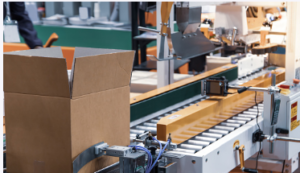RFID tags can be utilised to track a wide range of objects, such as tools, equipment, inventory, assets or people. They can also control processes like product restocking, stock checks and audits.
 RFID tags do not need the exact line-of-sight requirements as barcodes, meaning workers can scan more items more quickly without rotating boxes or dealing with damaged barcodes.
RFID tags do not need the exact line-of-sight requirements as barcodes, meaning workers can scan more items more quickly without rotating boxes or dealing with damaged barcodes.
They are small
RFID (Radio Frequency Identification) tags are small and store information. They commonly monitor inventory, assets, and people and detect theft and security threats. Once attached to objects, RFID tags provide real-time tracking capabilities.
RFID tags come in various materials, such as plastic, metal or glass. The material used to construct them determines their size; some tags can even fit inside human cells conveniently.
Microchips, known as nanochips, are much smaller than rice grains and are ideal for tracking animals and pets. In addition, their long lifespan and high stability make them suitable for implantation in a pet’s body for added security.
Researchers at Stanford University have developed a passive 60GHz tag as small as 22 microns, or 0.0009 inches. With an antenna the size of a grain of rice, it can be read up to five feet away by an optical reader.
RFID technology offers an efficient way to track items but comes with risks. Privacy issues have been raised by many. Despite these worries, the technology continues to gain acceptance and reach wider audiences.
These small chips store data that can help track assets monitor your health and safety and prevent fraudulence. They may be conveniently attached to clothing, doors, or other areas.
Furthermore, they are durable and resistant to damage. They can be attached to various surfaces and written on.
They can also be engraved or printed with information. It could include a barcode, text, and logos.
However, it would be best to be cautious not to place them near moisture. Some RFID tags have shorter read ranges because they cannot capture as much energy from a reader’s antenna when wet.
Fortunately, there are ways to prevent these issues. For instance, some tags are attached to metal objects to reduce their vulnerability to water and other environmental elements. Others are encased in epoxy for extra protection against damage or wear and tear. Lastly, some tags can securely adhere to hard surfaces using adhesives.
They can store information.
RFID tags are small chips that store and transmit data to an external reader. They’re widely used for identifying items, tracking inventory levels, automating processes in various industries, and product tracking in warehouses, stores and other environments.
Radiofrequency systems (HF, high or ultrahigh) and how they communicate with readers differ. HF systems operate between 3 and 30 MHz, while UHF ones run at frequencies between 300 and 3 GHz. The lower the frequency, the shorter their read range and the slower the data read rate.
RFID tags operate at a particular frequency, which can be affected by moisture and other environmental elements. LF systems remain unaffected by water, while UHF tags may experience significantly reduced read range when wet.
When attaching RFID tags to objects and surfaces, several methods are available: adhesive, glue or heat-sealable resin. You must select the best method for your specific situation so that it can withstand exposure to mechanical shock and vibration.
RFID tags can be customised with additional data, such as barcodes and text, to speed up laboratory sample gatekeeping and inventory processes. They’re accommodating in this capacity since barcode labels must be replaced for RFID tags to take their place.
They are easy to read.
RFID tags are small and contain a wealth of data. They can be utilised for tracking items in your store, providing real-time inventory data, and monitoring supply chains.
RFID, a relatively new technology, is becoming increasingly popular due to its efficiency and cost-reduction capacity. It’s ideal for retail stores, warehouses, and other locations requiring high levels of data accuracy.
Tags come in various forms, each with a distinct read range. For example, some can only be scanned from close range, while others can read from a distance.
Frequency is an important factor when reading RFID tags. The primary ranges of frequency available for an RFID system can be divided into four primary bands: low-frequency (LF), medium-frequency (MF), high-frequency (HF), and ultrahigh-frequency (UHF).
LF tags are typically employed in applications requiring a small read range, such as animal




